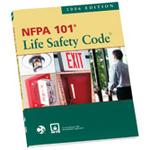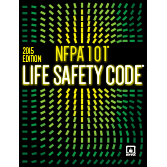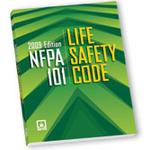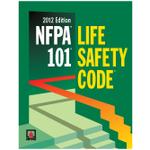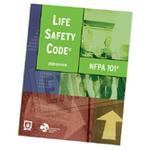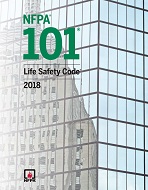
NFPA (Fire) 101
- Comments Off on NFPA (Fire) 101
- NFPA-FIRE
Click here to purchase
TMajor changes and an expanded scope make the 2018 edition of NFPA 101?: Life Safety Code® essential in any occupancy – from assembly to health care, industrial, and residential.
As the built environment and risks evolve, so do the challenges to protect people from fire and related hazards. NFPA®’s Life Safety Code is the most widely used source for strategies for occupant safety throughout the life of a building. Vital for architects, engineers, building owners and building managers, hospital administrators, and AHJs, NFPA 101 covers it all: Egress, sprinklers, alarms, emergency lighting, smoke barriers, special hazard protection, and much more.
For the 2018 edition, the scope of NFPA 101 is expanded to include hazardous materials emergencies, injuries from falls, and emergency communications.
The Code provides a flexible approach that adapts to nontraditional use of buildings; innovative designs; and new technologies, materials, and construction practices. It addresses life safety in both new and existing structures. Significant changes for the 2018 edition include:
- New requirements for hazardous materials protection of other than fire-related hazards (Chapter 8)
- A new reference to NFPA 4 for integrated fire protection and life safety system testing, and new provisions for risk analyses for mass notification systems (Chapter 9)
- Animal housing facilities added as special structures (Chapter 11)
- Added requirements for carbon-monoxide detection in new assembly occupancies and new residential board and care occupancies (Chapters 12 and 32)
- Added criteria for door locking to prevent unwanted entry in educational, day care, and business occupancies (Chapters 14-17, 38, and 39)
- A mandatory sprinkler requirement for all but very small new educational occupancies (Chapter 14)
- New provisions that permit health care and ambulatory health care smoke compartments up to 40,000 ft2 (3720 m2) in area (Chapters 18 and 19)
- Added requirements for bathtub and shower grab bars, which are then referenced by numerous occupancy chapters (Chapter 24)
- Added requirements for attic protection requirements that impact certain new hotels and dormitories and apartment buildings (Chapters 28 and 30)
- A new reference to NFPA 99 for medical gases in business occupancies (Chapters 38 and 39)
- A new Annex C that offers guidance on several NFPA® hazardous materials standards to assist users with the new hazardous materials protection requirements
Be sure your knowledge is up-to-date and your facilities meet code. Base your decisions on the 2018 edition of NFPA 101 and tackle safety challenges effectively.
Product Details
- Published:
- 09/06/2017
- ISBN(s):
- 9781455916832
- Number of Pages:
- 569

